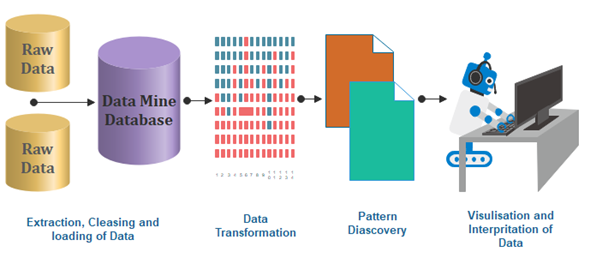IntroductionSAS (Statistical Analysis Software) is a widely used software for Data Analytics. It is a software suite that can alter, mine, manage and retrieve data from different sources and performs statistical analysis on it. It is also used for data management, statistical analysis, report writing, business modeling, application development, and data warehousing. It provides a point-and-click graphical user interface for non-technical users and more advanced options through the SAS language. This is a helpful tool through which you can use qualitative techniques and procedures that allow you to increase employee productivity and business profit. In SAS, data is extracted and categorized in tables which helps you to identify and analyze data patterns. This is a software suite that allows you to manage the advanced analysis, business intelligence, predictive analysis, and data to work effectively in competing and changing business situations. Besides, SAS is a platform independent software, which means that you can run SAS on any operating system like Linux, Windows, Mac, Ubuntu etc. 
SAS provides extensive support to programmatically transform and analyze data in the comparison of drag and drop interface of other BI tools. It provides very fine control over data manipulation and analysis, which is its USP. Most common definitions:SAS programSAS program contains data phase to retrieve and manipulate data, and the PROC phase to analyze data. There is a series of statements in each phase. The DATA phase contains executable statements that are responsible for the actions taken by a software, and the declarative statement that provides instructions for reading data sets or changing the format of the data. DATA PhaseThere are two steps in the DATA phase: compilation and execution. In the compilation phase, syntax errors are identified, and declarative statements are processed. Later, in the execution phase each executable statement is processed sequentially. The data set is organized into tables with the columns and rows. Columns called "Variables" and rows "Observations." In addition, each piece of data set has a descriptor and a value. PROCThe PROC stage contains PROC statements that are called named procedures. Analysis and reporting on data sets are done by procedures for data analysis, statistics, and graphics production. There are more than 300 processes, and each one has a substantial body of programming and statistical work. PROC statements can sort data, display results and perform other operations. MacrosMacros in SAS, are the pieces of code or variables that are coded once and referred to perform repetitive tasks. Data of SAS can be published in PDF, HTML, Excel and other formats via output delivery system, which was first introduced in 2007. The SAS Enterprise Guide has a point-and-click interface of SAS software. It generates code for manipulation or automated analysis and does not require SAS programming experience to use. The SAS software suite contains more than 200 components; some are given below.
Overview'What is SAS' is the question that usually comes to our mind. But the first question should be why this was developed so, the answer is, some statistical tools are required to handle tons of data generated each day. To handle this data in a systematic manner, SAS was developed. Creating and analyzing data is the main task of SAS followed by making a strategic decision. It can be said directly that the reason behind development of data analysis tools like SAS, is the excess of data that leads generation of data analysis and SAS does it effectively. The SAS programming language is considered to be a science of data-driven decision-making. Technology can bring us in structured readable data from raw data; it also predicts many solutions of a problem. But ultimately the call is for humans to make the final decision. It uses the repetitive and procedural exploration of past data to handle business decisions. Let's consider it with an example, have you ever wondered why there is a billing point in the mall, which is full of gum and candy on its edges. This is not an unplanned step, but rather a strategically decided decision. Let's see that, when parents are on the billing counter with their children, they wait for their turn. Gums and candy lure children and they demand for it. To prevent creating a scene at the counter parents have to buy it reluctantly. 
This leads to increased sales of candies and gum. This is what does by business analytics, observes trends and patterns, and manages the business to earn profit.
Next TopicSAS Features
|
 For Videos Join Our Youtube Channel: Join Now
For Videos Join Our Youtube Channel: Join Now
Feedback
- Send your Feedback to [email protected]
Help Others, Please Share










